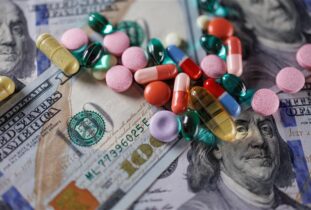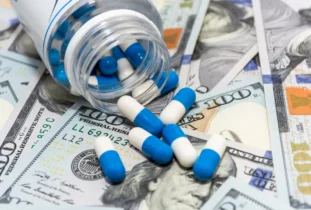High drug prices are a barrier to patient access. According to Model N’s new consumer survey, four out of ten respondents have delayed or skipped filling prescriptions due to cost concerns. KFF research found that more than half (55%) of American adults are worried about affording their family’s medicine.
Direct-to-consumer (DTC) drug sales have emerged as a potential cost-cutting mechanism. Patients are intrigued by this option. The Model N survey revealed that nearly three-quarters said they would likely buy medication directly from drug companies, but only about two in ten have actually done so. Cost is the primary motivator, with three-quarters reporting that lower prices would increase their likelihood of making a DTC purchase.
Unfortunately, the actual DTC savings do not match expectations. Consumers receive a discount off the list price, which is almost always higher than their insurance copay. As a result, this model is likely only to benefit a narrow group of patients who lack insurance, were denied coverage for specific drugs, or have high deductibles, while at the same time having the means to purchase medication at prices many multiples of the expected copays.
While DTC is one piece of the puzzle, the pharmaceutical industry must evaluate the entire distribution channel to improve drug pricing and medication affordability.
How are DTC drugs priced?
DTC transactions treat patients as cash-pay customers. Because the transaction is outside the insurance system, consumers see the full list price. Manufacturers tout DTC discounts ranging from 50% to 80% off the full price. These reductions are significant savings, but the total is still significantly more than insurance. For example, 80% off a $1,000 medication is $200, but a patient’s insurance copay is typically $25 to $50.
The DTC model doesn’t really solve the affordability issue because the prices are still too expensive for many people. To understand why DTC prices remain so high, we must look upstream at how list prices are set.
How are list prices calculated?
In the traditional drug pricing system, pharmaceutical manufacturers set a list price with the expectation that intermediaries, including pharmacy benefit managers (PBMs), group purchasing organizations (GPOs), and insurance companies, will negotiate substantial discounts and rebates. Manufacturers must also account for mandatory discounts to government programs, like Medicaid and 340B, and maximum fair prices (MFPs) established under the Medicare negotiation program.
Adding to the equation, PBMs and insurers prioritize formulary placements based on cost incentives. This fact compels manufacturers to offer steep rebates on medications to get preferential positioning, reducing the net price and placing upward pressure on list prices.
This dynamic results in what The Drug Channels Institute calls the gross-to-net bubble — the gap between the list and net prices. This number reached a record $356 billion in 2024. The Institute says this difference reflects and drives the affordability problem.
The gross-to-net bubble means DTC channels can’t deliver meaningful savings. Addressing affordability requires systemic changes, including reshaping rebate incentives and ensuring pricing transparency.
Pharma manufacturers face a difficult balance between managing pricing to increase patient access while maintaining revenue.
How does Model N help manage drug affordability?
Model N’s software solutions support you in navigating pricing, rebates, and government obligations to ensure compliance and optimize revenue management.
With Business Services for Gross to Net, our teams deliver accurate, auditable calculations of rebates, chargebacks, and pricing changes, along with timely forecasts that inform smarter contracting and transparency initiatives.
Contact Model N to learn more.
Survey methodology
Dynata conducted the survey in June 2025. The results included 1,000 online responses from adults aged 25+ across the United States.













